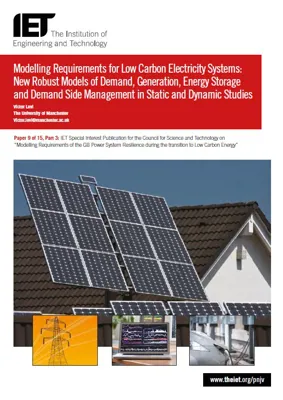Modelling Requirements for Low Carbon Electricity Systems
This paper presents modelling, input data and software aspects of the low carbon technologies and new ‘smart’ solutions that are going to be a part of business-as-usual within future distribution and transmission companies. The main objectives are evaluation of modelling requirements and capabilities for studying future electricity distribution and transmission networks, identification of gaps in existing modelling capabilities and currently available input data and critical assessment of the impact on GB power system performance and stability/security.
Modelling of future distribution networks requires integration of new low carbon technologies, such as solar and wind generation, electric vehicle and heat pump demands, and energy storage, as well as ‘smart’ network solutions including demand side management and response. Future distribution and transmission companies will have to apply a number of dynamic and steady-state power system studies to assess technical feasibility of the envisaged network solutions designed to deal with new low carbon technologies.
Several modelling and input data gaps are identified. Adequate dynamic models, which account for both non-electrical and electrical processes, do not exist in the currently used power system analysis tools for electric vehicles, heat pumps, demand side management, solar generation and all types of energy storage. Similarly, dynamic frequency control blocks are not developed for all considered demand and generation categories and need to be designed from scratch by the user.
Situation with steady-state, ‘single snapshot’ models is slightly better, however there are no adequate models for electric vehicles, batteries, compressed air, flywheel, super-capacitor and superconducting magnetic storage. Static hourly profiles, which are required in sequential studies, do not exist for electric vehicles, heat pumps, demand side management and response, compressed air, pumped hydro and battery storage.
Currently available reliability analysis engines cannot adequately model solar and wind generation, as well as compressed air, pumped hydro and battery storage. Data on harmonic current injections and reliability data are not available in all studied cases.

